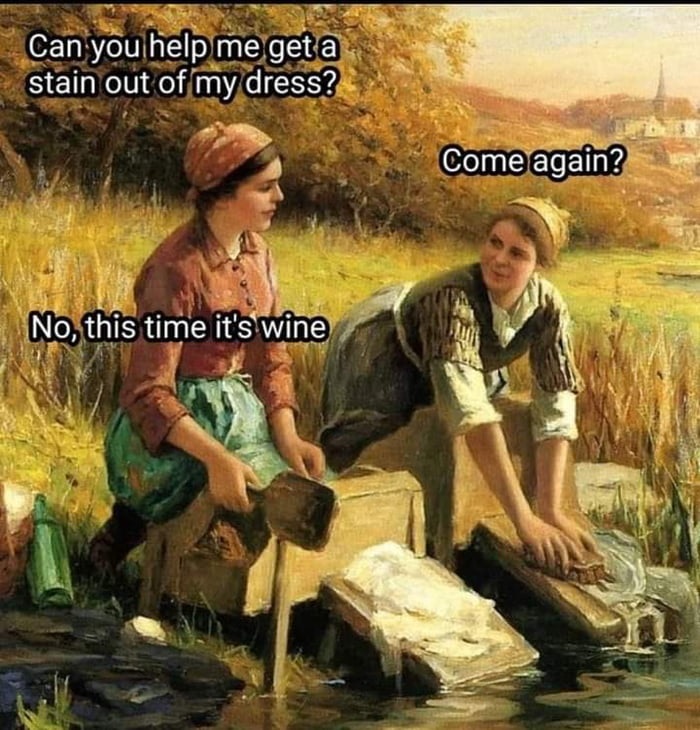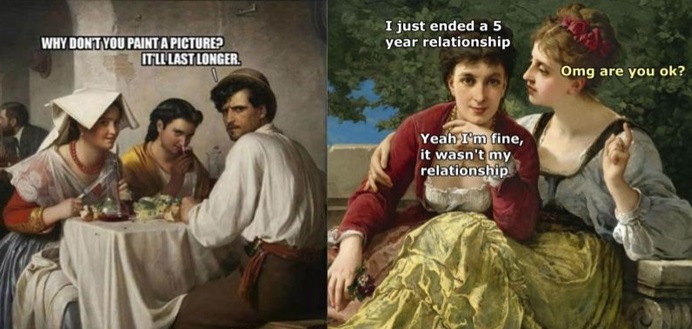The phrase “art jokes” is designated a category that blends humour and art. It can be used to allude to a wide range of humorous subjects related to the art world, including sculptures, paintings, artists, and art history. It can be connected to any topic of art and culture, regardless of the era, from antiquity to the present. These jokes are known for frequently using puns, wordplay, and insightful commentary on the art world. They can be anything from straightforward puns to intricate comedies that demand knowledge of art or art history to enjoy fully. Jokes about art can be a lighthearted way to cheer folks up and put a smile on their faces, especially those who appreciate creativity and the arts.
Jokes about art have the potential to foster a sense of community amongst artists, art lovers, and anyone working in the field. Joking around over a shared interest can improve relationships and promote a feeling of community. Art jokes can lighten the tone and create a more laid-back and pleasurable atmosphere in places like art classes, galleries, or museums where there may be a sense of seriousness or tension.

A few jokes about art refer to particular artists, art movements, or art forms. It can be a chance to learn about art appreciation and history to explain or comprehend these jokes. Humour can spark original thought and creativity. Wordplay and playful thinking are common elements of art jokes, which can inspire creative thought in both artists and non-artists. Certain jokes about art make fun of preconceptions or popular beliefs about the art world, providing a lighthearted reflection on how society views art, artists, and the art market.
A large audience can enjoy many art jokes, even though some may require a rudimentary understanding of art themes or history. They can unite people who are passionate about art and those who are just seeking a good laugh.
History of Art Jokes
The prolonged history of sarcasm and humour in human society is entwined with the history of art jokes. In ancient cultures like Egypt, Greece, and Rome, humour was a big part of daily life. Comedic poetry, satirical plays, and lighthearted artwork frequently made fun of politicians, society conventions, and even holy people. Humour was a popular tool employed by the era’s authors and artists to amuse and provoke. Art jokes continued to develop throughout the 20th and 21st centuries in tandem with cultural shifts and technological breakthroughs. A more comprehensive range of people could access humour concerning art as mass media, such as newspapers, magazines, television, and the internet, gained popularity. Art-related jokes and humour have become increasingly common in popular culture, thanks to the efforts of cartoonists, comedians, and online memes.

These days, art jokes can appear in various formats, such as cartoons, memes, social media posts, and stand-up comedy acts. They continue to be a source of amusement, social commentary, and cultural critique, demonstrating the enduring historical connection between comedy and art. If the joke is to laugh with your head down, art jocks aren’t. Art jocks are basically for thinking people, which means people who think and laugh. We need to think for a laugh. If you are not an art lover and thinker, art jocks may not be for you.
Why and What is Art Jokes
‘When I first wrote about jokes, I considered dividing them into pure and conditional ones. A conditional joke can work only with specific audiences and typically is meant only for those audiences. The audience must supply something in order either to get the joke or to be amused by it. That something is the condition on which the success of the joke depends. It is a vital feature of much joking that only a suitably qualified audience that can meet the condition can receive the joke, and the audience often derives additional satisfaction from knowing this about itself. A pure joke would be universal and would get through to everyone because it presupposed nothing in the audience, writes Ted Cohen in his book, Jokes: Philosophical Thoughts On Joking Matters.
According to Ted Cohen, there is no such thing as a pure joke. It is an ideal, but it doesn’t exist. At the very least, the audience will have to understand the language of the joke and much more. But even if all jokes are conditional, it is still helpful to note just how strongly conditional a particular joke is and what kind of condition is presupposed.
General jocks, like a jock related to medicine or psychology, need to know that subject; only then will they understand that jocks. You need not be a doctor, mathematician, or philosopher to appreciate ‘subject’ jokes, nor even know much about doctoring, mathematics, or philosophy. At most, you need some acquaintance with the presumed proclivity of surgeons to cut first and then diagnose, of mathematicians’ curious notions of elegance, and of philosophers’ professional license to say anything they want because there is no way to prove them wrong. So they can do anything they can get away with (like writing a book about jokes). Ted Cohen writes that these three jokes require something specific of their audiences but are only mildly hermetic.

In the book ‘You Can Make Your Own Jokes, Sharon Holt writes about the beauty of jokes in human society; ‘Imagine a World without Laughter. No jokes. No clowns. No farting cushions. Sounds boring, doesn’t it? Moreover, having a good sense of humour helps us stay well, fight illness and live longer. Some researchers believe the human race wouldn’t have lasted without a good giggle now and then. Maybe it wasn’t survival of the fittest but the survival of the funniest! Let’s face it: we were born to laugh. We even have a funny bone!’
Sharon Holt brings examples from ancient Greek and Roman comedies that also made fun of everyday life, and joking is even mentioned in the Bible. Jest books were all the rage in Europe in the Middle Ages, when times were tough, and a good chuckle helped lift the mood after a particularly gruesome series of battles and executions.
According to Holt, When you listen to a joke, your brain reacts like hearing a realistic story. As the words unfold, your mind expects a sensible outcome. When the end of the joke differs from what you were expecting, you laugh. It’s the brain’s way of coping with a sudden change.
Art jokes are not only a fun way to pass the time, but they also carry a rich cultural and historical history of humour. Artists and humorists have used Wit, sarcasm, and wordplay to craft jokes that amuse, inform, and encourage thinking from ancient civilizations to today.
Through art humour, people can connect, create a sense of community, and develop a greater appreciation for the arts. These quips dismantle barriers, lighten the atmosphere, and provide a singular perspective on the intricacies of the art industry. Moreover, art jokes illustrate the dynamic interplay between humour and creativity, showing how humour can spark original thought and inventiveness. Examining the past of art jokes helps us understand how humour has changed and influences society’s discourse.
In the end, art jokes serve as a reminder that creations don’t necessarily have to be serious; they can also be wacky, whimsical, and deliciously ridiculous. Humour can bring people together and deepen our understanding of the world, so let’s remember to have fun while we continue to connect with art in all its forms.
Feature Image: demilked.com, pinterest.jp





